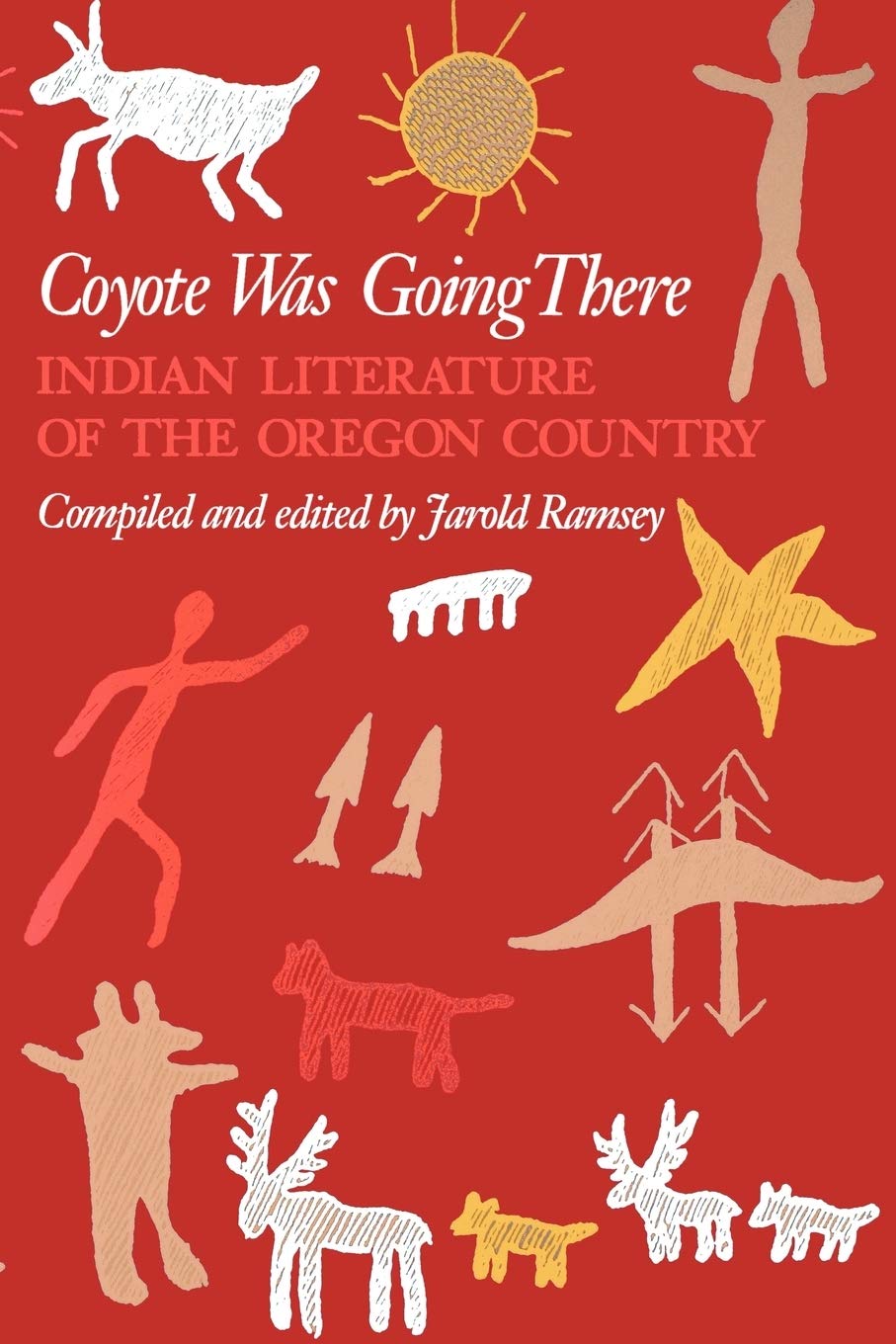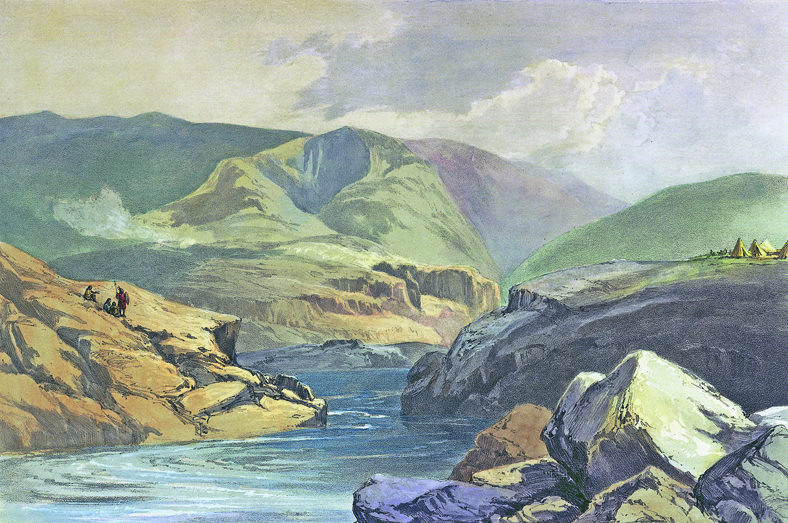The figure of Coyote is prominent in Native American traditional narratives in Oregon and throughout the West. This is hardly surprising, given the widespread distribution of coyotes (canis latrans) and their human-like intelligence, wily resourcefulness, and playfulness. It would be a mistake, however, to assume that all Indian groups have the same conception of Coyote. A Navajo storyteller once denied that a Coos story about Coyote stealing salmon was really a Coyote story at all, noting that in Navajo country, coyotes don't eat fish. Likewise, it would be mistaken to claim that Coyote is necessarily the primary character in Indian traditional repertories. In fact, he often appears in secondary roles, sometimes as a foil to a heroic protagonist. And, of course, there are many stories in Oregon and elsewhere with no coyotes at all.
Nonetheless, Coyote is a very popular figure, playing his role of scheming, self-seeking trickster, stirring up trouble, testing and violating moral precepts. He provides a vicarious escape from social restrictions—that is, until his usual come-uppance for such outrageous misbehavior reinforces them.
In many Coyote stories—notably, those set in the Myth Age, when reality is being constructed—he is a transformer as well as a trickster. In the Wasco Chinookan story-cycle, for example, Coyote travels up the Columbia River, tricking the Myth Age figures he meets, but also setting mythic precedents as he goes. Mostly, he sets good precedents, such as liberating the salmon and inventing copulation, but he also establishes some that are regrettable, as when he recklessly loses forever the possibility of bringing loved ones who have died back to life.
In his mixed nature as Trickster/Transformer, Coyote is not a "culture hero." He is, as we say, "all too human" in his foibles. In his comic and mythic modes, as in the well known Nez Perce "Orpheus" story, "Coyote and the Shadow People," he projects the fullest, most compelling image of human nature to be found in the traditional Native story-repertories.
It is a measure of the importance (and perhaps the seductiveness) of Coyote stories in Native cultures in Oregon and elsewhere that by custom they were not to be told casually between spring and early fall, when there was work to be done outdoors. Instead, they were sanctioned for formal indoor performance, in winter, in the season of spirit-power celebrations.
Coyote stories are still popular in Oregon's Indian communities today, both traditional tales and Coyote adventures set in the modern world. Among the latter, his chief function seems to be to satirize and "hold off" the encroachments of Anglo culture. There is, for example, the widespread tale of how Coyote outsmarts an anthropologist who comes on the Rez and catches him in a live trap to get his stories. After he releases Coyote, the anthropologist discovers that his traps are fouled with coyote dung!
-
![]()
Coyote Was Going There, by Jarold Ramsey.
University of Washington Press
Related Entries
Related Historical Records
Map This on the Oregon History WayFinder
The Oregon History Wayfinder is an interactive map that identifies significant places, people, and events in Oregon history.
Further Reading
Ramsey, Jarold, ed. Coyote Was Going There: Indian Literature of the Oregon Country. Seattle: University of Washington Press, 1977.
Ramsey, Jarold. Reading the Fire: The Traditional Indian Literatures of America. Seattle: University of Washington Press, 199
William Bright, ed. A Coyote Reader. Berkeley: University of California Press, 1993.




